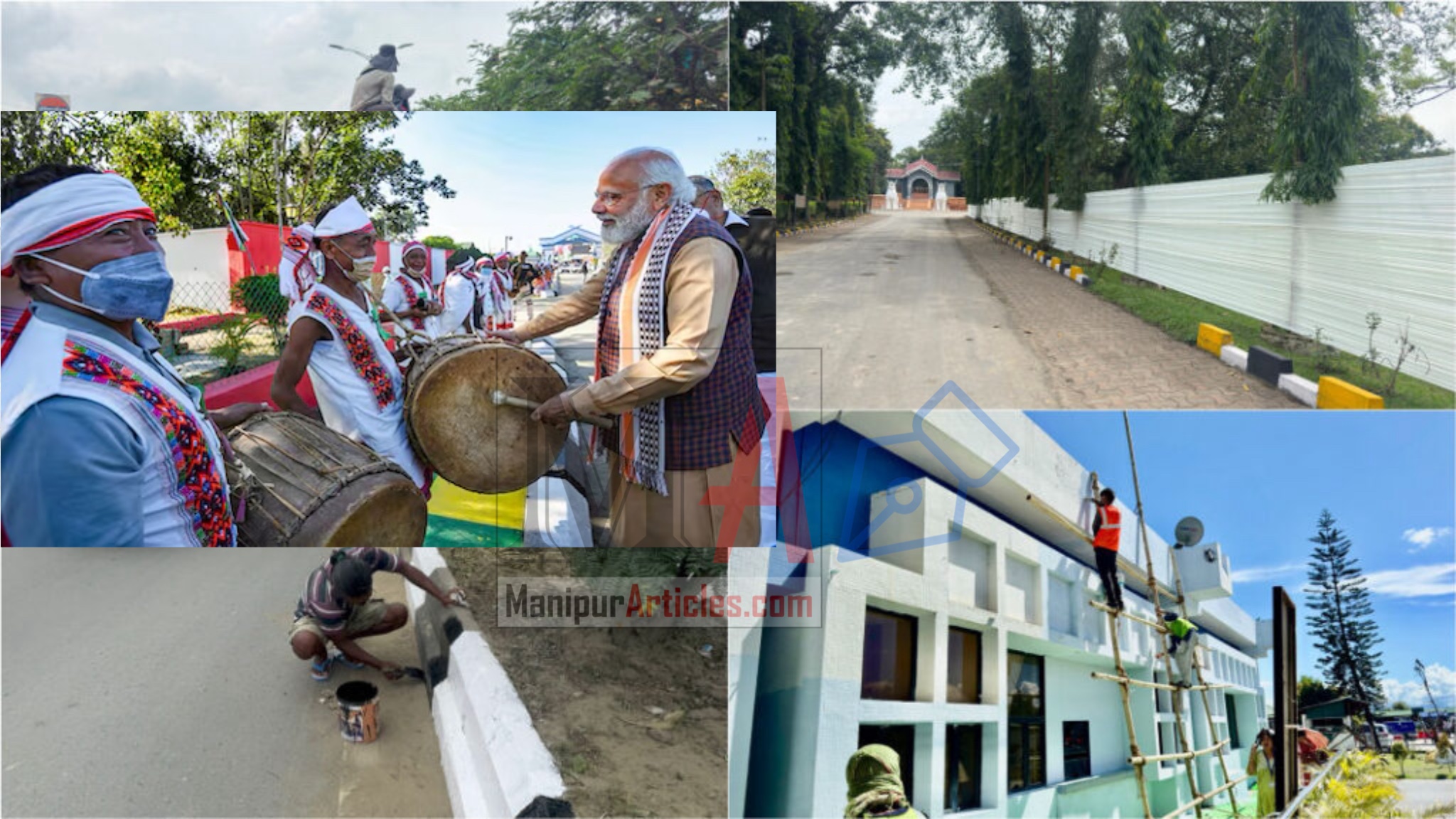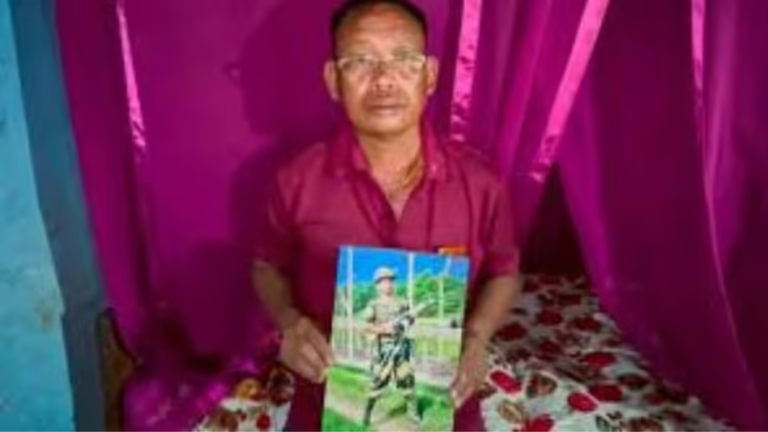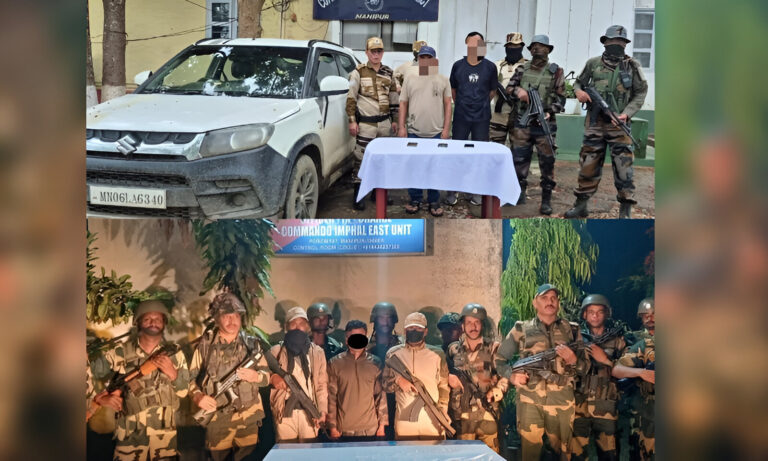Manipur Kangla Fort Readies for PM Modi’s Visit
A massive stage is being erected at Kangla Fort in Imphal and extensive cleaning, painting and beautification work is underway as local authorities gear up for Prime Minister Narendra Modi’s likely visit to Manipur (reported for around September 13, 2025). Officials say preparations include accommodating over 15,000 people in front of the stage, increased security deployment with visitor registration, and road-edge work along the roughly 7-kilometre route between the airport and Kangla Fort. The planned visit would be the Prime Minister’s first to the state since the ethnic clashes that began in May 2023, and comes as the state remains under President’s rule with the assembly under suspended animation.
What’s actually happening at Kangla Fort? (A boots-on-the-ground picture)
The preparations are in full swing. Workers have brought construction materials into Kangla Fort from outside the state, more than 100 labourers are engaged in setting up a massive stage, and officials say the front-of-stage area is being readied to accommodate over 15,000 people. Inside the fort, cleaning crews and painters are refurbishing the grounds and heritage structures. Security deployments have increased, and visitors to the fort are being registered as they enter — a sign that authorities are taking visitor management and screening seriously.
Road-to-fort: the 7-kilometre makeover and what it signals
It’s not just the fort itself. Authorities are repainting road medians, trimming trees, and doing touch-ups along the route between Imphal airport and Kangla Fort — about seven kilometres of stretch that every visitor’s convoy will pass through. Local teams are polishing the corridor so that first impressions are tidy and controlled. Similar sprucing-up is reportedly being carried out at the Peace Ground in Churachandpur district too. The idea isn’t only aesthetics — a cleared, well-maintained route reduces security risks, speeds logistics, and, frankly, looks better on broadcast.
But there’s another, quieter truth: when you put paint on medians and trim trees, you reframe the city’s daily life — temporarily — to match a narrative of order and return to normalcy. For some residents that’s reassuring; for others, especially those still feeling displaced, it can look like surface-level polish masking unresolved grievances.
FAQs
1. Q: Is Prime Minister Modi’s visit to Manipur officially confirmed?
A: As of reporting, multiple outlets cite a likely visit around September 13, 2025, but official confirmation typically comes from the PMO or state administration. Preparations at Kangla Fort and along the route suggest authorities are acting on anticipated plans.
2. Q: Why is Kangla Fort chosen for this event rather than a modern venue?
A: Kangla Fort is Manipur’s historical and cultural heart; hosting a national-level visit there is symbolic and resonates with state identity. That symbolism both attracts official attention and requires careful heritage protection during event work.
3. Q: What security restrictions should locals expect during the visit?
A: Expect increased security deployments, registration of visitors at the fort and checkpoints along the airport–Kangla corridor. Road diversions, temporary closures of certain public areas, and restrictions on drone or unmanned flights are common during such VVIP visits.
4. Q: Will the visit help displaced people and victims of the May 2023 violence?
A: The visit can catalyse attention and resources, but whether it helps depends on post-visit commitments and delivery. Locals and civil society will be watching for concrete rehabilitation packages, timelines, and independent monitoring mechanisms to ensure aid reaches those in need.
5. Q: How can citizens ensure this visit leads to real change?
A: Citizens and civil-society groups should demand transparent timelines for announced programs, participate in local monitoring committees, document needs (shelter, healthcare, livelihoods), and hold officials accountable through media and formal grievance channels. Sustained public engagement is the best insurance against empty optics.



